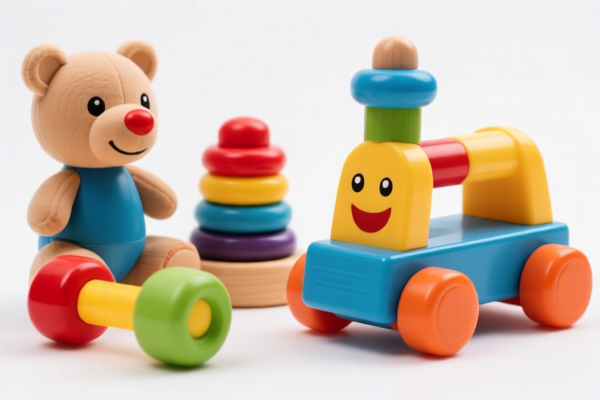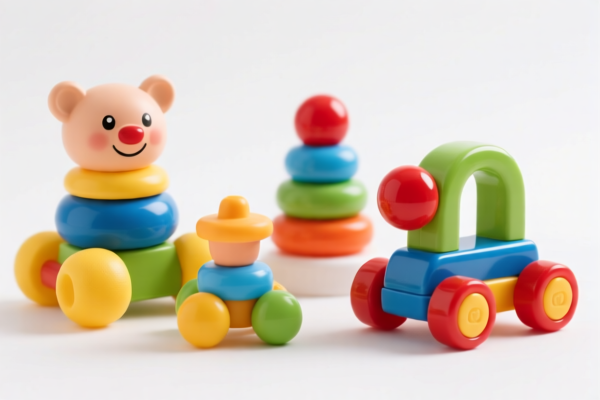| HS Code | Official Doc | Tariff Rate | Origin | Destination | Effective Date |
|---|---|---|---|---|---|
| 9503000071 | Doc | 30.0% | CN | US | 2025-05-12 |
| 9503000073 | Doc | 30.0% | CN | US | 2025-05-12 |
| 3926904000 | Doc | 32.8% | CN | US | 2025-05-12 |
| 3926909989 | Doc | 42.8% | CN | US | 2025-05-12 |
| 3924104000 | Doc | 33.4% | CN | US | 2025-05-12 |
| 3924905650 | Doc | 40.9% | CN | US | 2025-05-12 |




Squishy Toys
Squishy toys are soft, slow-rising foam toys, primarily used for stress relief, tactile stimulation, and entertainment. They gained significant popularity in the mid-2010s and remain a common item, particularly among children and young adults.
Material:
The core material of most squishy toys is polyurethane foam. This foam is often combined with other ingredients to achieve varying textures, colors, and densities. Common additives include:
- Polyurethane prepolymers: These determine the foam's elasticity and rise time.
- Colorants: Dyes and pigments are added to create a wide range of colors and patterns.
- Fragrances: Scents are frequently incorporated to enhance the sensory experience.
- Glycerin: Used to increase softness and tackiness.
- Emulsifiers: Help to stabilize the foam mixture.
Purpose & Function:
- Stress Relief: The primary function is to provide a tactile outlet for stress and anxiety. Squeezing, pulling, and manipulating the toy can be calming.
- Tactile Stimulation: The soft texture provides sensory input, beneficial for individuals with sensory processing disorders or those seeking a calming sensory experience.
- Entertainment: Their unique shapes, colors, and slow-rising properties make them enjoyable to play with.
- Collection: Many individuals collect squishy toys, seeking out rare or limited-edition designs.
Usage Scenarios:
- Home/Personal Use: Used as desk toys, fidget tools, or simply for relaxation.
- Classrooms: Sometimes used as tools to help students focus or manage anxiety. Note: Use should be monitored due to potential distractions or misuse.
- Therapy: Occupational therapists may utilize squishy toys as part of sensory integration therapy.
- Party Favors/Gifts: Popular as small gifts or party favors.
Common Types:
Squishy toys are categorized based on shape, speed of rise, and features:
- Animal Squishies: The most common type, featuring a wide variety of animals (unicorns, pandas, cats, etc.).
- Food Squishies: Shaped like food items (cakes, bread, fruits, etc.).
- Character Squishies: Based on popular cartoon or anime characters.
- Jumbo Squishies: Larger-sized squishies, often animal-shaped.
- Slow-Rising Squishies: These take a longer time to return to their original shape after being squeezed, a desirable characteristic.
- Kawaii Squishies: Characterized by cute, Japanese-inspired designs.
- DIY Squishies: Kits and instructions are available for making squishy toys at home.
Care & Maintenance:
- Avoid Sharp Objects: Squishy toys are easily torn or punctured.
- Keep Clean: Surface cleaning with mild soap and water is recommended.
- Store Properly: Keep away from direct sunlight and extreme temperatures.
- Supervision: Small parts may pose a choking hazard for young children.
- Avoid Excessive Force: While designed to be squeezed, excessive force can damage the foam.
Squishy toys fall under various classifications depending on their material and specific characteristics. Based on the provided information, the following HS codes are relevant:
-
3926904000: This HS code covers “Other articles of plastics and articles of other materials of headings 3901 to 3914: Other: Imitation gemstones”. While primarily for imitation gemstones, squishy toys made to resemble gems or with a similar appearance could fall under this classification.
- 39: Chapter 39 covers plastics and articles thereof.
- 26: Heading 3926 specifically covers other articles of plastics.
- 904000: Subheading 3926904000 further specifies “Imitation gemstones”.
-
3926909989: This HS code covers “Other articles of plastics and articles of other materials of headings 3901 to 3914: Other: Other”. This is a broader classification for plastic toys not specifically defined elsewhere.
- 39: Chapter 39 covers plastics and articles thereof.
- 26: Heading 3926 specifically covers other articles of plastics.
- 909989: Subheading 3926909989 covers “Other” plastic articles.
-
9503000071: This HS code covers “Tricycles, scooters, pedal cars and similar wheeled toys; dollsʼ carriages; dolls, other toys; reduced-scale (“scaleˮ) models and similar recreational models, working or not; puzzles of all kinds; parts and accessories thereof “Childrenʼs productsˮ as defined in 15 U.S.C. § 2052: Other: Labeled or determined by importer as intended for use by persons: Under 3 years of age”. If the squishy toy is classified as a toy for children under 3 years of age, this HS code applies.
- 95: Chapter 95 covers toys, games, and sports equipment.
- 03: Heading 9503 covers toys, games, and sports equipment.
- 000071: Subheading 9503000071 specifies toys for children under 3 years of age.
-
9503000073: This HS code covers “Tricycles, scooters, pedal cars and similar wheeled toys; dollsʼ carriages; dolls, other toys; reduced-scale (“scaleˮ) models and similar recreational models, working or not; puzzles of all kinds; parts and accessories thereof “Childrenʼs productsˮ as defined in 15 U.S.C. § 2052: Other: Labeled or determined by importer as intended for use by persons: 3 to 12 years of age”. If the squishy toy is classified as a toy for children between 3 and 12 years of age, this HS code applies.
- 95: Chapter 95 covers toys, games, and sports equipment.
- 03: Heading 9503 covers toys, games, and sports equipment.
- 000073: Subheading 9503000073 specifies toys for children between 3 and 12 years of age.
Regarding HS codes 9503000071 and 9503000073, please note that the classification depends on the age group the toy is intended for, as determined by the importer. These HS codes fall under the definition of “Children’s products” as defined in 15 U.S.C. § 2052.
Customer Reviews
No reviews yet.